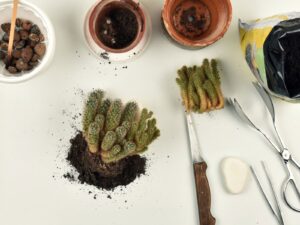The Bunny Ears Cactus, scientifically known as Opuntia microdasys, is a captivating member of the cactus family, renowned for its unique appearance and remarkable resilience. With its charming pads resembling bunny ears, it has become a popular choice among houseplant enthusiasts. However, as delightful as this desert dweller may be, it is not immune to a plethora of cultivation challenges. This article delves into common issues that Bunny Ears Cactus owners may encounter and offers practical solutions to ensure a thriving specimen.
Understanding these issues not only enhances our appreciation for this particular cactus but also underscores the complexity of plant care, drawing enthusiasts deeper into the fascinating world of botany.
Environmental Conditions: The Foundation of Health
The vitality of your Bunny Ears Cactus hinges significantly on its environmental conditions. With origins in the arid landscapes of Mexico, the Bunny Ears Cactus thrives in bright light and well-drained soil. Insufficient sunlight is a common pitfall, often manifested through elongated, pale pads. If your cactus exhibits this behavior, it is a clear indication that it is stretching toward the light source due to lack of sufficient illumination.
On the other hand, intense direct sunlight can be equally detrimental, causing sunburn, characterized by browning or bleached patches on the pads. To find a harmonious balance, provide your cactus with bright, indirect light for most of the day, allowing for a few hours of direct sunlight in the morning or late afternoon. Moreover, consider rotating the pot occasionally to ensure even exposure to light.
Another critical factor is watering. Cacti are typically drought-resistant; thus, overwatering is a prevalent problem. This problem exacerbates when a cactus is potted in a non-draining pot or overly dense soil, leading to root rot. When assessing your watering schedule, allow the soil to dry out completely between sessions. During the growing season, which spans from spring to early autumn, a bi-weekly watering routine is generally adequate. In the winter months, reduce watering to once a month or even less, depending on your climate.
Pest Infestations: A Silent Menace
Despite the robust exterior of the Bunny Ears Cactus, it is susceptible to various pests, notably scale insects and mealybugs. Scale insects resemble small, hard shells and often appear on the pads, while mealybugs are white and cottony, hiding in the crevices of the cactus. Infestations typically result in a stunted growth trajectory and yellowing pads, signaling their draining of vital nutrients.
To combat these pests, start by isolating the affected cactus to prevent further spread. Utilize a soft brush dipped in rubbing alcohol to physically remove the pests, targeting the affected areas. For more severe infestations, insecticidal soap or neem oil can serve as effective treatments, providing both immediate and long-lasting effects. It is imperative to follow the manufacturer’s instructions carefully when applying such treatments to ensure safe and effective pest control.
Fungal Diseases: Hidden Dangers Below
The dark side of dealing with excess moisture is the potential onset of fungal diseases, which can prove fatal if not identified early. Symptoms, such as dark, mushy spots or blackened pads, may develop and spread quickly. Fungal infections usually thrive in situations where airflow is poor and humidity levels are high, a combination frequently exacerbated by overcrowded arrangements or inappropriate potting materials.
To mitigate these risks, choose pots made of breathable materials such as terracotta, allowing for adequate ventilation and moisture evaporation. Ensure that the soil used is cactus-specific or a well-draining mixture composed of coarse sand, perlite, and loamy substrates. Moreover, make it a practice to introduce airflow to your cactus’s environment. Placing it in a well-ventilated room or alongside a small fan can effectively reduce humidity levels.
If a cactus is afflicted with a fungal disease, it may require re-potting into fresh soil after removing any visibly affected roots and pads. In some cases, applying a fungicide can also assist in eradication. Continuous monitoring is crucial to determine if any symptoms reappear or if new growth is emerging, signaling recovery.
Conclusion: Care and Patience
Owning a Bunny Ears Cactus is not merely an aesthetic endeavor; it is an intricate dance of environmental balance, pest management, and disease prevention. Each challenge faced reveals the deeper intricacies of plant care, emphasizing the connection between nature and the enthusiast.
Through proper light exposure, meticulous watering routines, vigilant pest inspections, and proactive disease management, one can nurture Bunny Ears Cacti into vibrant symbols of resilience. The allure of these quirky cacti lies not only in their whimsical form but also in the unique journey they offer to caretakers—inviting a sense of wonder that transcends the ordinary and illuminates the extraordinary nuances of botanical life.




Leave a Comment